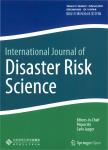Modeling Impact of Hurricane Damages on Income Distribution in the Coastal U.S.
Modeling Impact of Hurricane Damages on Income Distribution in the Coastal U.S.作者机构:Department of StatisticsNorth Dakota State UniversityFargoND 58108USA Department of Applied EconomicsNorth Dakota State UniversityFargoND 58108USA
出 版 物:《International Journal of Disaster Risk Science》 (国际灾害风险科学学报(英文版))
年 卷 期:2014年第5卷第4期
页 面:265-273页
核心收录:
学科分类:02[经济学] 0709[理学-地质学] 07[理学] 070601[理学-气象学] 0303[法学-社会学] 0832[工学-食品科学与工程(可授工学、农学学位)] 0830[工学-环境科学与工程(可授工学、理学、农学学位)] 1201[管理学-管理科学与工程(可授管理学、工学学位)] 0201[经济学-理论经济学] 020105[经济学-世界经济] 0708[理学-地球物理学] 0837[工学-安全科学与工程] 0705[理学-地理学] 0706[理学-大气科学] 0813[工学-建筑学] 0704[理学-天文学] 0833[工学-城乡规划学]
主 题:Hurricane damages Income distribution Disaster insurance United States
摘 要:This article examines the impact of catastrophic hurricane events on income distribution in hurricane states in the United States. Media claims have been made and the perception created that the most damaging impact of hurricanes is on the lowest income population in the affected states. If these claims are true, they may have serious implications for the insurance industry and government policy makers. We develop a panel data, fixed effects econometric model that includes hurricane-impacted states as cross-sections using annual data for a period of almost 100 years. The Gini coefficient is used as a measure of income inequality, and is a function of normalized hurricane economic damages, gross domestic product(GDP), a set of socioeconomic variables that serves as a control, time trend, and cross-sectional dummy *** indicate that for every 100 billion US dollars in hurricane economic damages there is an increase in income inequality by 5.4 % as measured by Gini ***, sociodemographic, and economic variables are also significant. These include such variables as the political party controlling the U.S. Senate, the proportion of nonwhite population by state, and GDP. Time trend is a positive and significant variable, suggesting an increase in income inequality over time. There are significant differences among the states included in the study. Our results demonstrate that different segments of the population are differently impacted by hurricanes and suggest how that differential impact could be considered in future government policies and business decisions, particularly those made by the insurance industry.



